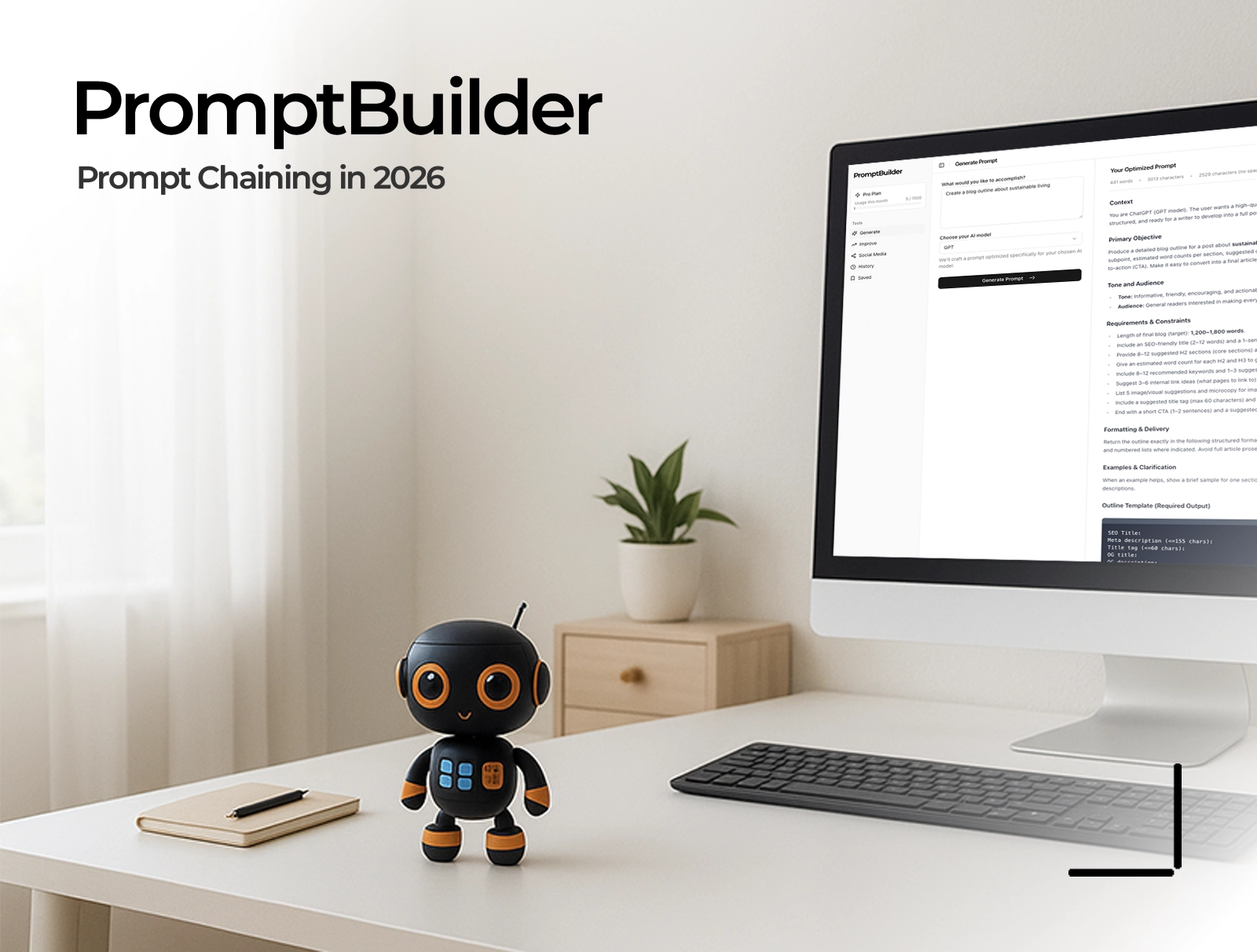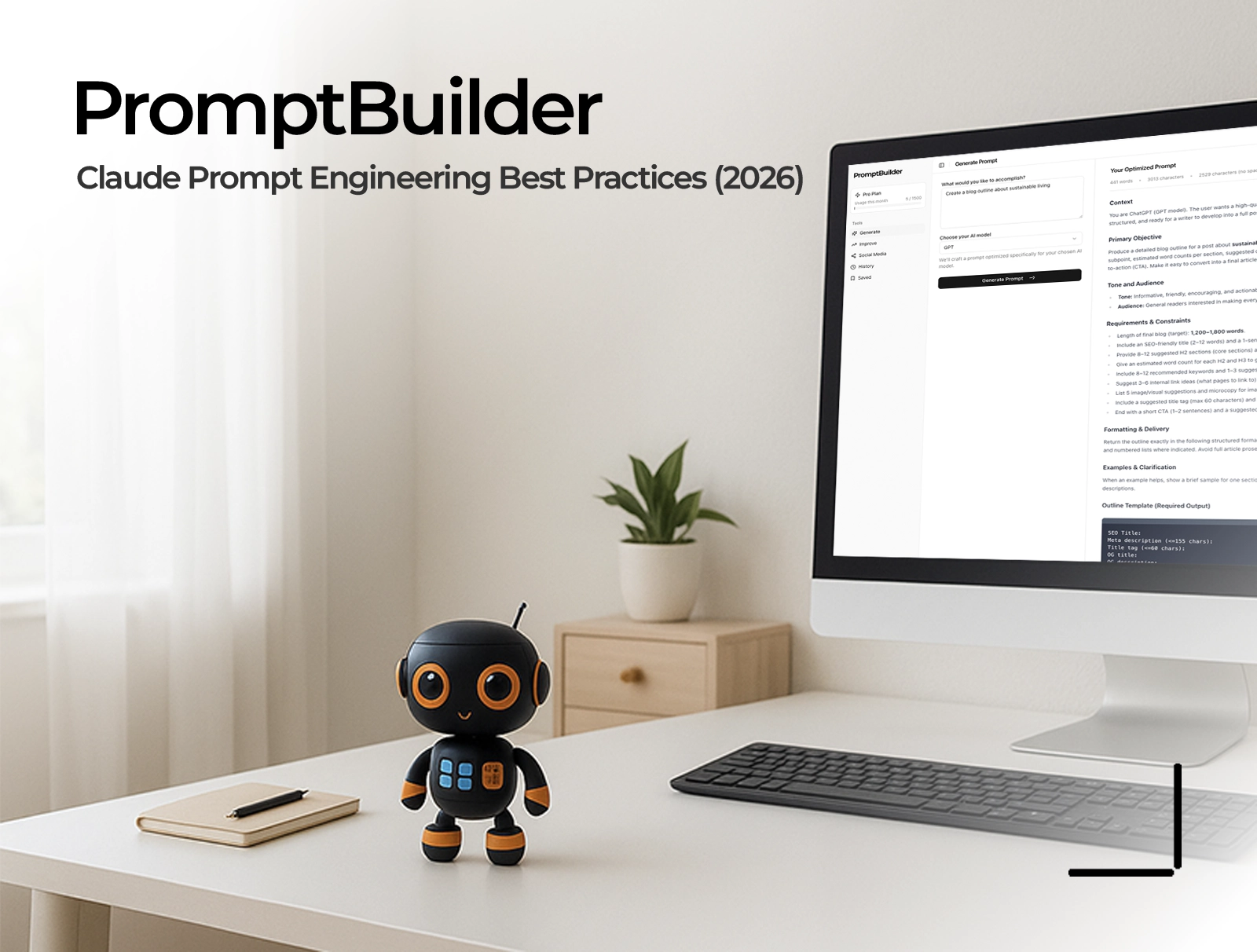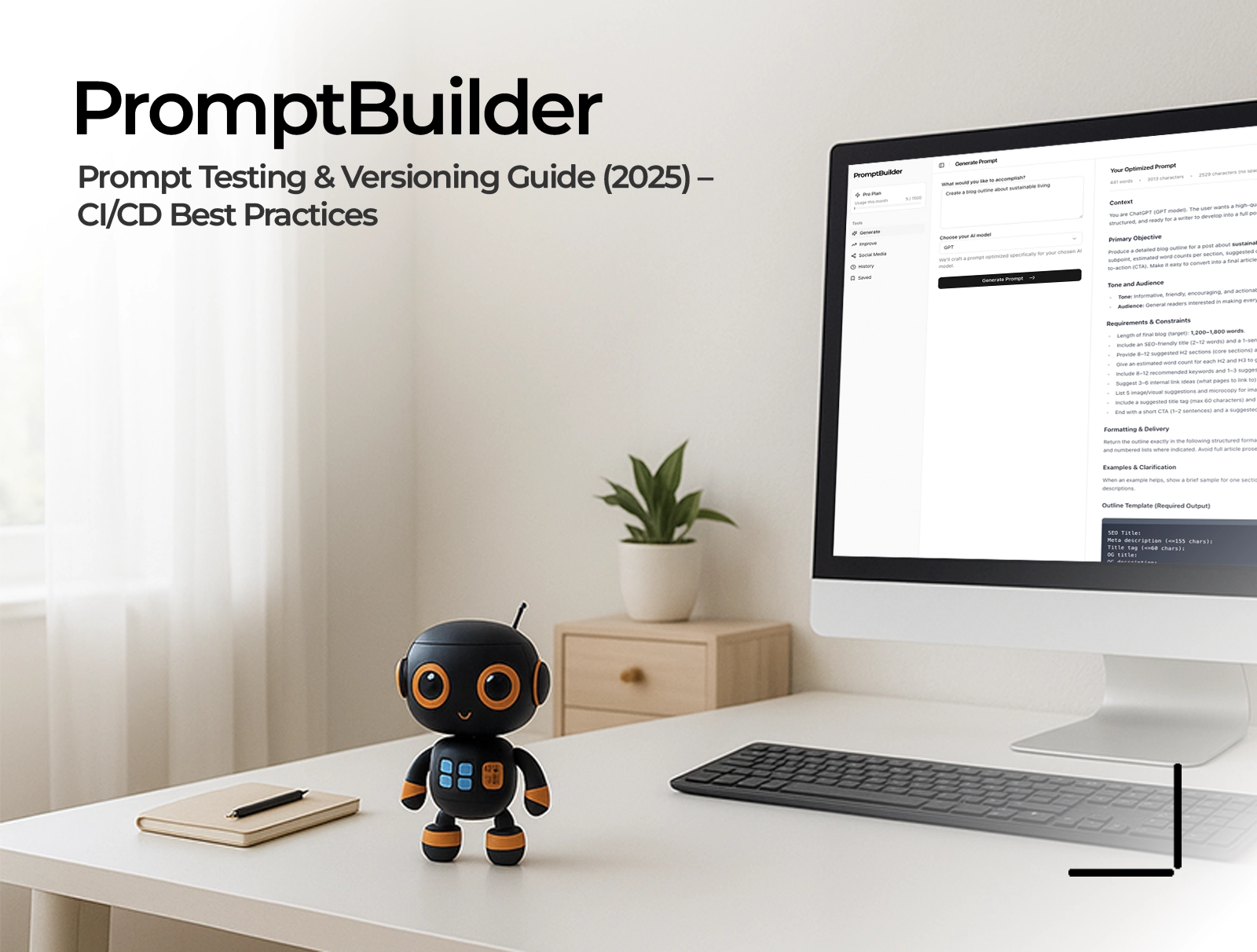PromptBuilder Team
August 17, 2025
4 min read
Featured
Prompt Engineering Checklist 2025
A fast, actionable checklist you can apply to any AI model-plus model-specific mini-checklists for ChatGPT, Claude, and Gemini. Use this when writing important prompts so you get consistent, high‑quality outputs on the first try.
Before Writing a Prompt: Define Goal & Model
Use this pre‑prompt checklist to avoid vague requests and model mismatches.
- Goal: One clear objective and success criteria (what does a “good” answer look like?)
- Audience: Who will consume the output (expertise level, tone expectations)
- Deliverable: Output type and format (bullets, paragraphs, table, JSON, code)
- Constraints: Scope, sources allowed/forbidden, length, time/budget, tokens
- Model: Choose based on strengths
- ChatGPT (GPT‑4o): code, structured outputs, creative writing
- Claude 3: long, careful reasoning; analysis and critique
- Gemini 1.5: multimodal inputs; research synthesis and verification
Structuring Prompts: Context → Instructions → Examples → Output Format
Follow this structure for reliability and reuse.
- Context
- Minimum background the model needs (project, audience, constraints)
- Link or paste only the essential data; prefer bulleted summaries
- Instructions
- One explicit task per prompt (or split into steps)
- Add guardrails: what to avoid, boundaries, assumptions to state
- Examples (when helpful)
- 1–3 short examples showing desired tone/format
- For data tasks, include a small input→output pair
- Output Format
- Exact structure (e.g., numbered sections, schema, or headings)
- Length and tone; ask to surface uncertainties and cite sources when used
Quick template:
Context: {{who/what/why}}
Task: {{the single action you want}}
Constraints: {{scope, rules, length, sources}}
Examples: {{optional few-shot}}
Output: {{exact format + tone + verification notes}}
Optimization: Iteration & Evaluation
Improve quality and reduce cost with a tight loop.
- Baseline → Improve → Verify (BIV)
- Baseline: Run a small initial prompt
- Improve: Add missing context/constraints/examples
- Verify: Ask for checks (assumptions, sources, edge cases); revise if needed
- Evaluation rubric in‑prompt (0–5): Clarity, Evidence, Actionability
- Ask for uncertainties and follow‑ups if confidence < 0.7
- Save winners as templates; track token cost and success rate
Copy‑paste verification snippet:
First, produce the best answer.
Then verify by listing key assumptions, sources (if used), and 2–3 edge cases.
If an issue is found, revise and output the corrected answer.
Mini‑Checklists by Model
ChatGPT Prompt Checklist
- Role + formatting: Set a clear role and specify headings/lists/tables
- Break complex tasks into steps; prefer numbered sub‑tasks
- Give 1–3 examples for style/format consistency
- Ask for JSON or code blocks when integrating downstream
- Request short “assumptions” and “next steps” sections
Example starter:
Role: Senior technical writer.
Task: Draft a concise API quickstart.
Constraints: <=300 words; avoid vendor jargon; include curl + JS fetch.
Output: H2 sections: Overview, Setup, Request, Response, Next Steps.
Claude Prompt Checklist
- Provide rich context; ask for step‑by‑step analysis and critique
- Invite self‑checks (assumptions, risks, trade‑offs) and a short summary
- Use structured sections; request explicit reasoning where valuable
- Favor longer, careful evaluation over breadth; ask to flag uncertainty
Example starter:
Context: You’re reviewing a security RFC for a SaaS product.
Task: Analyze risks and propose mitigations for auth + data access.
Constraints: <=600 words; prioritize practicality; include 3 risks with severity.
Output: Findings, Evidence, Mitigations, Open Questions.
Gemini Prompt Checklist
- Call out multimodal inputs (text + image) or data tables if relevant
- Be explicit about research parameters and request citations
- Ask for verification notes and limitations; prefer bullet summaries
- Use concise instructions with clear, scannable output sections
Example starter:
Task: Summarize 2024–2025 SMB AI adoption.
Parameters: NA + EU; companies 10–500 employees; cite 3 sources <12 months.
Output: Stats, Use Cases, Challenges, ROI, 2025–2026 Outlook (bullets, <=250 words).
Downloadable PDF Checklist
Prefer a printable version? Download the one‑page PDF:
- Download: Prompt Engineering Checklist 2025
We’ll keep this PDF updated as methodologies evolve.


